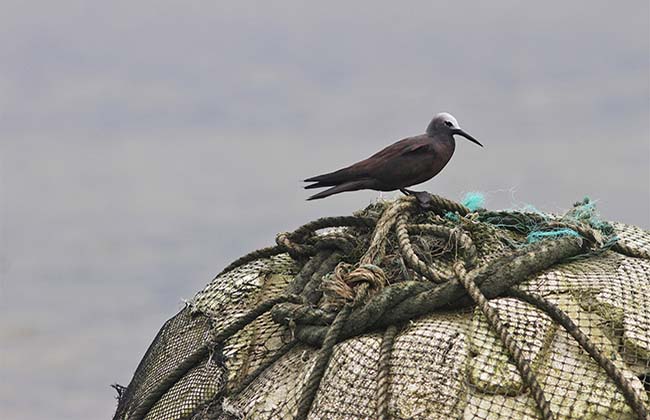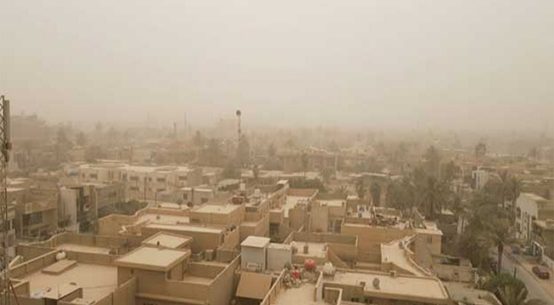
On Sept. 7, 2024, British ornithologist Gary Allport and Dutch birdwatcher Jan-erik Nilsen took a boat from Bangladesh’s coastal district of Cox’s Bazar to Sonadia Island. On their way, while they observed a flock of terns feeding around a fishing boat, a lesser noddy (Anous tenuirostris) flew in, circled the boat twice, and then flew off, surprising them. This is the first time the seabird species was recorded in Bangladesh.
“Fortunately, we got quick photos and then headed off to Sonadia. Once there, we saw another noddy very briefly, which we could not identify as the species for certain, but we assumed it was the same bird,” Allport said.
Then they headed back to Cox’s Bazar. When they got to the lagoon by Cox’s Bazar airport, they saw two lesser noddies together. A close examination of the pictures showed that they were different individuals from the ones they saw first in the morning, so there were at least three birds. And it seemed likely that the bird at Sonadia was a fourth.
“[A] lesser noddy first for Bangladesh — Boom! Great day out in a boat at the weekend from Cox’s Bazar to Sonadia area with good numbers of terns and waders. Nice start finding the first lesser noddy but then followed by two more, and probably a fourth bird too. Really super birding,” Allport wrote on his X handle after sighting the birds.
Lesser noddies are generally a bird of the open seas, and there has been no record of the species near the Bangladesh coast. The news of the bird being spotted in Bangladesh has brought much excitement among Bangladeshi birders.
To verify the claim of the lesser noddy discovery, a seven-member team of birders, including wildlife biologist and professor Monirul H. Khan, later visited the coastal areas in Cox’s Bazar, where they, too, found lesser noddies at Sonadia Island, confirming its presence in Bangladesh.
“Before the discovery by Gary Allport and Jan-erik Nilsen, this seabird was not spotted in Bangladesh. The record of lesser noddy was good news for bird researchers, adding a new bird to Bangladesh’s bird checklist,” IUCN senior program officer and bird researcher Sarwar Alam Dipu told Mongabay.
He said he’s surprised that lesser noddies have come to Bangladesh. He added that the season for birds’ migrations has just started, but the lesser noddy is not a migratory bird for Bangladesh. “It is a ‘vagrant bird,’” which means an individual bird appears well outside its normal range.
Bangladesh, a tropical region naturally rich in biodiversity has a great diversity of birds. Checklists of birds in Bangladesh made by biologists over the past 40 years show 578 to 718 species in the country, according to the 2015 IUCN Red List. BirdLife International shows there are 603 bird species in Bangladesh, 18 of which are seabirds, and 145 of which are waterbirds.
Where the noddies go
The lesser noddy is a tropical tern confined to the Indian Ocean. The birds, which measure 30-34 cm (11.8-13.4 inches) in length with a wingspan of 58–63 cm (22.8-24.8 in.). The species breeds in large numbers within the western Indian Ocean, in the Seychelles and Chagos archipelagos, and in smaller numbers in other regions. During non-breeding periods, the birds disperse within the rest of their habitat.
Although the details of their movements are not well known, there are reports of what are presumably non-breeding lesser noddies at sea across a wide area, including off Aldabra, Tanzania, Kenya, Somalia and Oman, from a 2023 study.
Khan said it is unknown why the birds traveled to the Bangladesh coast, as its movement in Sri Lanka and the Bay of Bengal is very rare. Alam said the lesser noddies spotted recently in Bangladesh coastal areas likely came to the country during the recent cyclones and will perhaps return to their original habitats after the stopover.
(This article was republished from Mongabay under Creative Commons License)
Rafiqul Islam is an environment and development journalist based in Dhaka, Bangladesh. He has been reporting on the environment, climate change, conservation, development and human rights.


